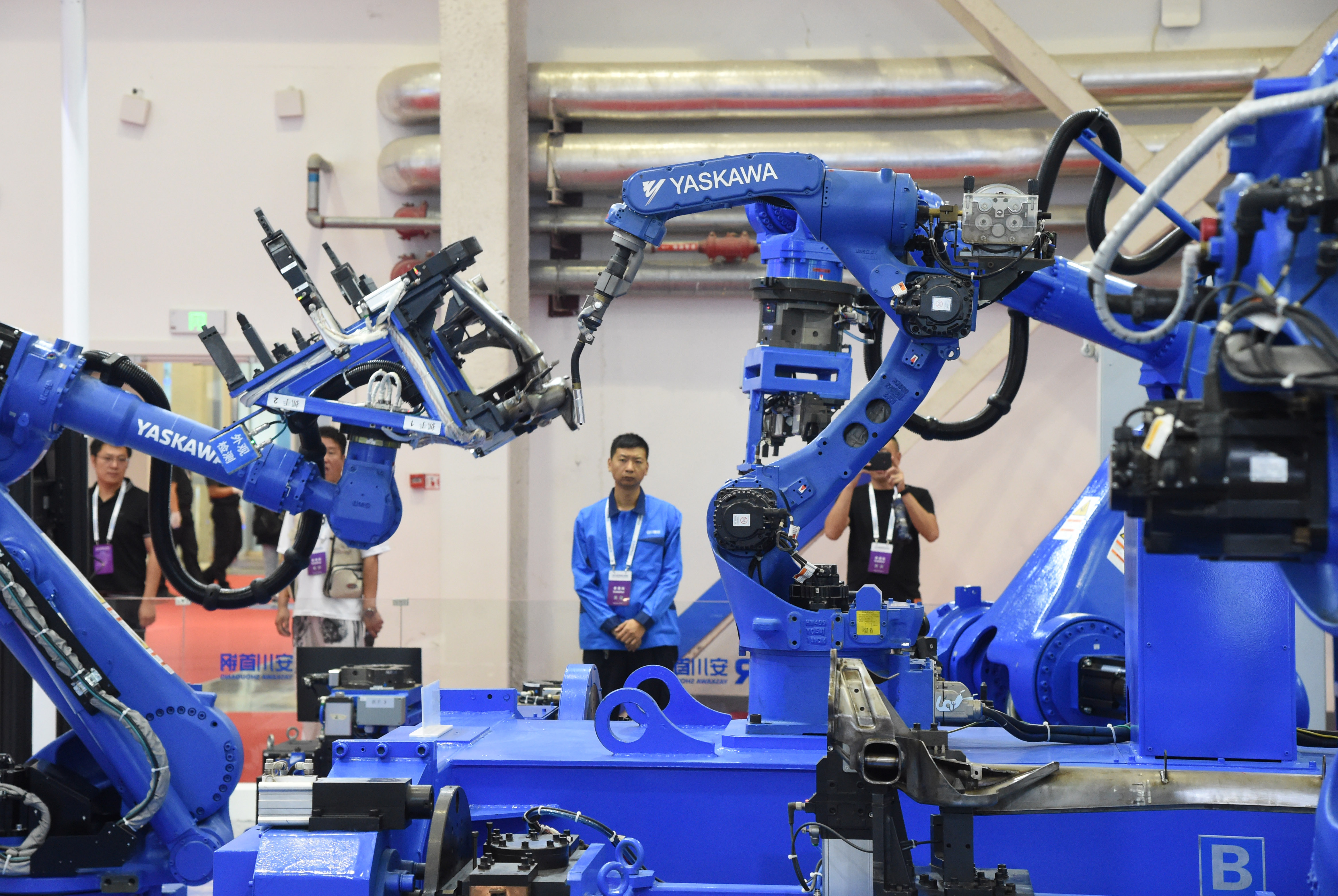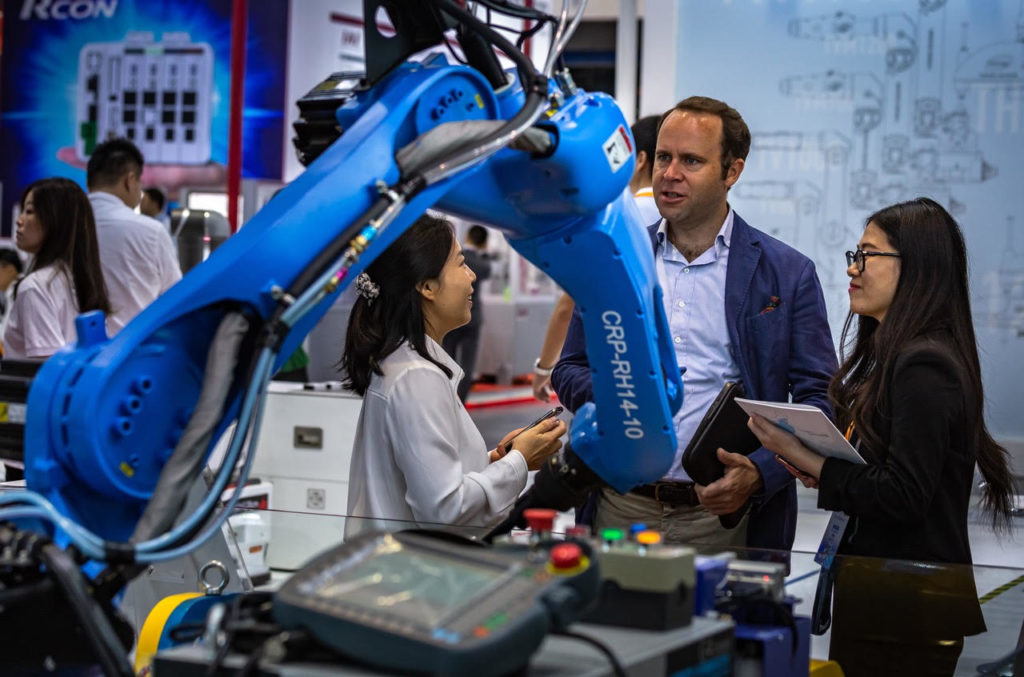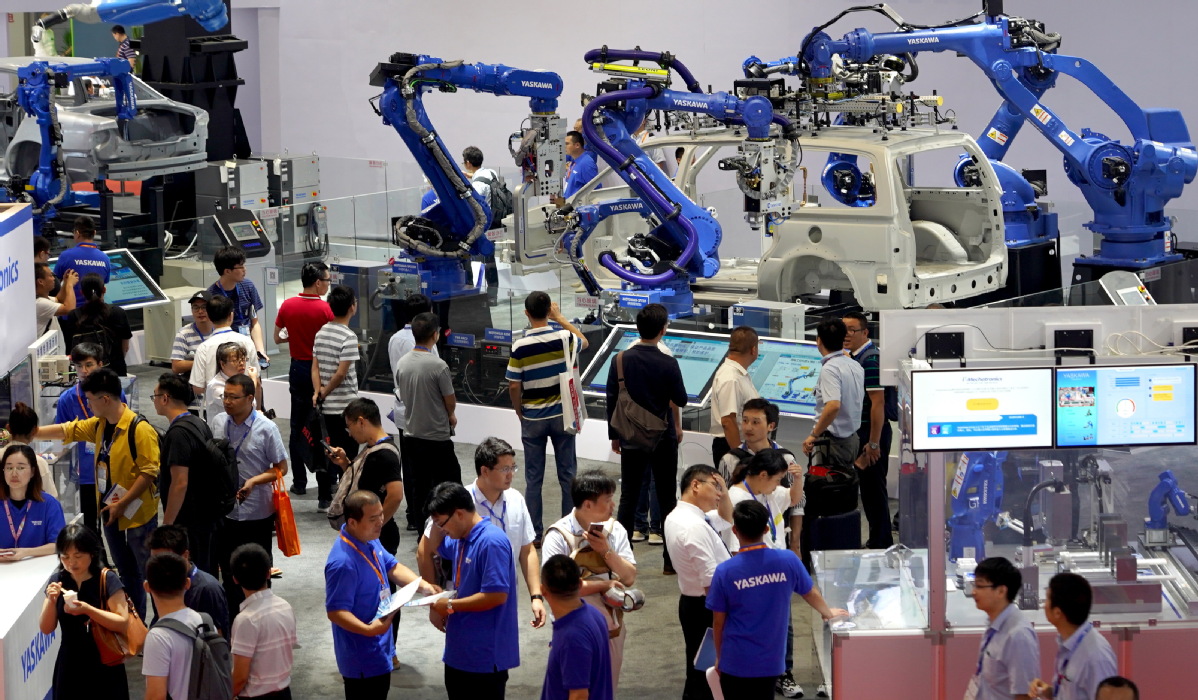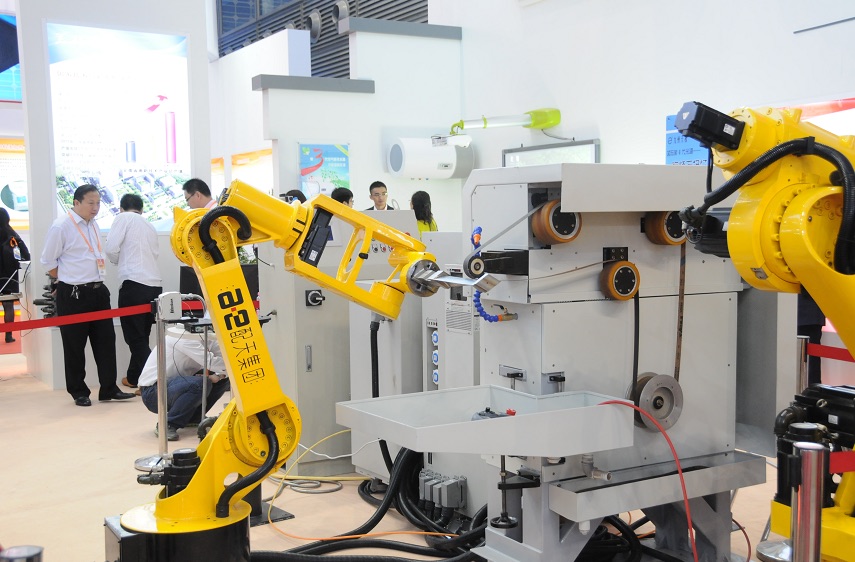The rise of Chinese industrial robots is shaking up the global market as domestic manufacturers capitalize on the growing demand within China’s flourishing electronics industry and the need for manufacturing upgrades.
With the domestic share of industrial robots doubling from 17.5% in 2015 to 35.5% in 2022, Chinese companies are making significant strides, bolstered by supply chain disruptions and a surge in automation requirements due to pandemic-related labor shortages.

Industrial Robots
The pivotal role of industrial robots, primarily equipped with robotic arms, in factory automation, cannot be overstated. Originating in the late 1950s, industrial robots have grown alongside the development of manufacturing in Western countries. China embarked on its exploration of industrial robots in the 1980s, and since the 2000s, the country has commercialized them on a large scale.
According to market research firm Astute Analytica, the global industrial robot market reached a value of $18.2 billion in 2022, and experts predict it will expand nearly eightfold to $151.4 billion by 2031.
For a long time, international manufacturers such as Kuka AG, ABB Ltd., Fanuc Corp., and Yaskawa Electric Corp. have dominated the industrial robot sector. Foreign companies have maintained a market share of over 60% in China, with 12 of the country’s top 20 industrial robot suppliers being international firms in the first half of 2022.
However, Chinese manufacturers are rapidly gaining ground in a rapidly expanding market. While foreign competitors still dominate the large industrial robot sector, which requires higher technology and quality, the growing market offers ample room for domestic players to thrive. China is currently the world‘s largest industrial robot market, accounting for 51.9% of global installations in 2021.
Chinese robotic companies seeking to expand their presence must focus on breakthroughs in core parts, operating systems, and algorithms. They are seizing opportunities in the electronics and electrical industry, which accounts for a significant portion of global robot installations, particularly in China where the proportion is even higher.

As a major producer of electronic and electrical equipment, especially “3C products” (computers, communications, and consumer electronics), China’s intelligent manufacturing hub has seen labor-intensive industries embrace automation to mitigate rising costs and labor shortages.
Home appliance manufacturers like Midea Group Co. Ltd. have achieved high automation rates, resulting in improved efficiency. The increasing use of small industrial robots by electronics manufacturers presents further business opportunities for domestic robot-makers.
In the automotive industry, the adoption of industrial robots is also significant, driven by electric vehicle production. While imported robots still dominate Chinese auto production lines, the rise of China’s new-energy vehicles has opened doors for Chinese industrial robots.
New-energy vehicle brands are more receptive to domestic supply chains, and some automakers are beginning to explore the use of Chinese robots. Collaborative robots, or “cobots,” are gaining popularity in the auto industry due to their safety, flexibility, and ease of use. Chinese cobots, such as those manufactured by Aubo, are making their way into multiple automotive production lines.

China’s industrial robot manufacturers face challenges in competing with global giants in the large industrial robot sector, which demands higher technology and quality. Analysts note that foreign competitors still maintain dominance in this segment.
However, the market for industrial robots in China has been expanding rapidly, providing domestic players with greater opportunities for growth. Wang Jiegao, the former general manager of Estun Automation Co. Ltd. and a former member of the International Federation of Robotics (IFR) executive board, highlights the shifting dynamics, stating that “in terms of absolute growth and expansion of the market, domestic robot makers are much better positioned.”
To strengthen their competitive edge, Chinese robot manufacturers are investing in research and development (R&D) to enhance their technological capabilities. By focusing on breakthroughs in core components, operating systems, and intelligent algorithms, they aim to deliver high-quality, cost-effective industrial robots that can meet the market’s diverse needs. Additionally, collaboration between industry and academia plays a vital role in driving innovation and knowledge transfer in the robotics sector.

In recent years, the Chinese government has also taken significant steps to support the development of the domestic industrial robot industry. Through initiatives such as the “Made in China 2025” program, the government aims to upgrade the manufacturing sector and enhance its competitiveness globally.
The program prioritizes advanced manufacturing technologies, including robotics and automation, and offers various incentives and subsidies to encourage research, development, and adoption of these technologies. The government’s support, combined with favorable market conditions and the growing demand for industrial robots, has created a conducive environment for the expansion of Chinese manufacturers.
The Last Bit, China’s industrial robot market is undergoing a transformative phase as domestic manufacturers challenge global giants. The supply chain localisation and advancements in core parts production have made Chinese industrial robots more competitive. With a virtuous cycle in motion, industry experts predict that the Chinese robot industry will experience substantial growth over the next five to ten years.
As China’s economy recovers and companies increasingly recognize the benefits of automated production lines, the demand for industrial robots is expected to surge even further, solidifying China’s position as a key player in the global market.
The rise of Chinese industrial robots not only reshapes the dynamics of the global industrial robot sector but also presents significant opportunities for innovation, economic growth, and the overall advancement of the Chinese manufacturing industry.



